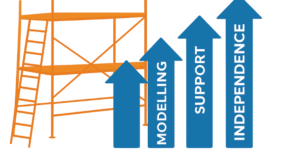Procrastination is a pervasive and often misunderstood behavioural pattern that affects students, professionals, and even high achievers. It is a voluntary delay of an intended task despite foreseeing negative consequences (Steel, 2007). This self-defeating behaviour is not merely a result of laziness or poor time management; rather, it reflects deeper psychological, emotional, and environmental factors. By understanding these underlying causes and applying evidence-based strategies, individuals can overcome procrastination, enhance productivity, and consistently meet deadlines.
1.0 Understanding Procrastination
Procrastination can be viewed as a self-regulation failure, where individuals struggle to align their intentions with actions. Dr. Piers Steel (2007), in The Procrastination Equation, identifies four central variables influencing procrastination: expectancy, value, impulsiveness, and delay. For instance, when individuals doubt their ability to succeed (low expectancy) or perceive little value in a task, they are more likely to delay it. Conversely, impulsiveness—the tendency to prioritise short-term gratification—magnifies procrastination.
From a psychological perspective, Ferrari, Johnson, and McCown (1995) argue that chronic procrastinators exhibit avoidance coping patterns, often using procrastination to protect their self-esteem from potential failure. Similarly, Tice and Baumeister (1997) demonstrated that procrastination provides temporary mood relief but increases long-term stress and poor performance outcomes.
Neuropsychological studies also link procrastination to executive dysfunction in the prefrontal cortex, affecting planning and self-control (Sirois & Pychyl, 2013). These findings suggest procrastination is not purely a moral failing but a cognitive challenge that requires structured interventions and habitual retraining.
2.0 Strategies to Overcome Procrastination
2.1 Set Clear and Achievable Goals
A common reason people procrastinate is the overwhelming nature of large, ambiguous tasks. Research by Locke and Latham (1990) in A Theory of Goal Setting and Task Performance reveals that specific, challenging goals enhance motivation and performance. Vague intentions such as “I’ll study later” often lead to avoidance, whereas precise goals like “I will summarise Chapter 3 between 2–3 p.m.” foster accountability and action.
Breaking large tasks into smaller, measurable milestones provides a sense of progress and reduces anxiety. For instance, a student writing a dissertation might begin with outlining sections before drafting individual chapters. This step-by-step approach sustains momentum and focus, transforming an intimidating project into achievable portions.
2.2 Utilise Time Management Techniques
Time management remains a cornerstone of anti-procrastination strategies. Alec Mackenzie and Pat Nickerson (2009), in The Time Trap, recommend prioritising tasks based on urgency and importance using the Eisenhower Matrix. This method helps individuals identify and focus on high-value activities rather than reacting to minor distractions.
Another effective tool is the Pomodoro Technique, developed by Francesco Cirillo in the 1980s. This method breaks work into 25-minute intervals separated by 5-minute breaks. Research indicates this approach can enhance sustained attention and reduce cognitive fatigue (Cirillo, 2006). Digital apps such as Focus Booster and Forest have popularised this approach, allowing users to gamify productivity.
Additionally, creating daily schedules, maintaining to-do lists, and designating specific workspaces contribute to consistency and discipline—two qualities essential for meeting deadlines.
2.3 Address the Psychological Aspects
Many individuals procrastinate due to deeper psychological causes, including fear of failure, perfectionism, or low self-efficacy. According to Burka and Yuen (2008) in Procrastination: Why You Do It, What to Do About It Now, perfectionists delay tasks because they fear not meeting their own unrealistic standards. Similarly, people with low self-confidence may procrastinate to avoid confronting potential inadequacies.
Cognitive-behavioural therapy (CBT) principles can help break this pattern. Neil Fiore (2007), in The Now Habit, introduces “unscheduling”—a method that prioritises leisure first, making work less burdensome. By integrating enjoyable activities, individuals reframe work as a positive choice rather than a punishment.
Furthermore, self-compassion—treating oneself with kindness during setbacks—has been shown to reduce procrastination by decreasing anxiety (Sirois, Yang & van Eerde, 2019). Thus, overcoming procrastination often requires addressing emotional barriers alongside behavioural change.
3.0 Practical Tips for Meeting Deadlines
3.1 Create a Detailed Plan
Detailed planning transforms intentions into actionable steps. Project management tools such as Gantt charts, Asana, or Trello help visualise timelines, dependencies, and milestones. According to research by Claessens et al. (2007), individuals who employ structured planning report higher productivity and lower stress levels.
A detailed plan should include specific start and finish times, buffer periods for unforeseen delays, and periodic reviews to assess progress. This systematic approach instils clarity, commitment, and control—three essential qualities for deadline adherence.
3.2 Set Interim Deadlines
Instead of viewing a task as one monolithic deadline, it helps to create interim goals. These smaller checkpoints generate a sense of urgency and facilitate self-monitoring. For instance, a marketing professional preparing a campaign might set internal deadlines for research, design, and client review phases. According to Ariely and Wertenbroch (2002), individuals who impose self-set deadlines perform better than those with none, provided the deadlines are binding and realistic.
3.3 Limit Distractions
Distractions are among the most pervasive triggers of procrastination. In an age of smartphones and social media, attention fragmentation is a major productivity killer. Cal Newport (2016), in Deep Work, argues that cultivating the ability to focus without distraction is the new “superpower” of the digital economy. He recommends setting time blocks for uninterrupted concentration and reducing digital interruptions through techniques like website blockers and notification silencing.
Creating a distraction-free environment—by decluttering, using noise-cancelling headphones, or designating specific “focus hours”—can greatly enhance work quality and output consistency.
3.4 Seek Accountability
Accountability amplifies motivation through external reinforcement. Studies show that when individuals share their goals or progress with others, they are significantly more likely to complete them (Harkin et al., 2016). This can take the form of a mentor, study group, or productivity partner. Regular check-ins foster commitment and external validation, helping sustain focus even when intrinsic motivation wanes.
For example, writers often join accountability groups such as NaNoWriMo (National Novel Writing Month), where members commit to specific daily writing goals and share progress publicly—turning a solitary task into a communal endeavour.
Procrastination is not an incurable flaw but a habitual response to discomfort, uncertainty, and self-doubt. Through conscious effort, structured planning, and psychological insight, individuals can rewire their responses and improve time management. Setting clear goals, embracing practical techniques like the Pomodoro method, addressing emotional barriers, and fostering accountability all contribute to conquering procrastination.
Ultimately, discipline and self-awareness lie at the heart of consistent performance. By mastering these skills, individuals not only meet deadlines but also cultivate a mindset of proactive engagement, resilience, and personal growth—essential qualities for success in today’s fast-paced world.
References
Ariely, D. & Wertenbroch, K. (2002) ‘Procrastination, deadlines, and performance: Self-control by precommitment’, Psychological Science, 13(3), pp. 219–224.
Burka, J. & Yuen, L. (2008) Procrastination: Why You Do It, What to Do About It Now. Cambridge, MA: Da Capo Press.
Cirillo, F. (2006) The Pomodoro Technique. Italy: Francesco Cirillo.
Claessens, B. J. C., van Eerde, W., Rutte, C. G. & Roe, R. A. (2007) ‘A review of the time management literature’, Personnel Review, 36(2), pp. 255–276.
Fiore, N. (2007) The Now Habit: A Strategic Program for Overcoming Procrastination and Enjoying Guilt-Free Play. New York: TarcherPerigee.
Harkin, B. et al. (2016) ‘Does monitoring goal progress promote goal attainment? A meta-analysis of the experimental evidence’, Psychological Bulletin, 142(2), pp. 198–229.
Locke, E. A. & Latham, G. P. (1990) A Theory of Goal Setting and Task Performance. Englewood Cliffs, NJ: Prentice-Hall.
Mackenzie, A. & Nickerson, P. (2009) The Time Trap: The Classic Book on Time Management. New York: AMACOM.
Newport, C. (2016) Deep Work: Rules for Focused Success in a Distracted World. New York: Grand Central Publishing.
Sirois, F. M. & Pychyl, T. A. (2013) ‘Procrastination and the priority of short-term mood regulation: Consequences for future self’, Social and Personality Psychology Compass, 7(2), pp. 115–127.
Sirois, F. M., Yang, S. & van Eerde, W. (2019) ‘Self-compassion and procrastination: The role of adaptive emotion regulation’, Personality and Individual Differences, 141, pp. 40–45.
Steel, P. (2007) The Procrastination Equation: How to Stop Putting Things Off and Start Getting Stuff Done. New York: Harper.
Tice, D. M. & Baumeister, R. F. (1997) ‘Longitudinal study of procrastination, performance, stress, and health: The costs and benefits of dawdling’, Psychological Science, 8(6), pp. 454–458.









